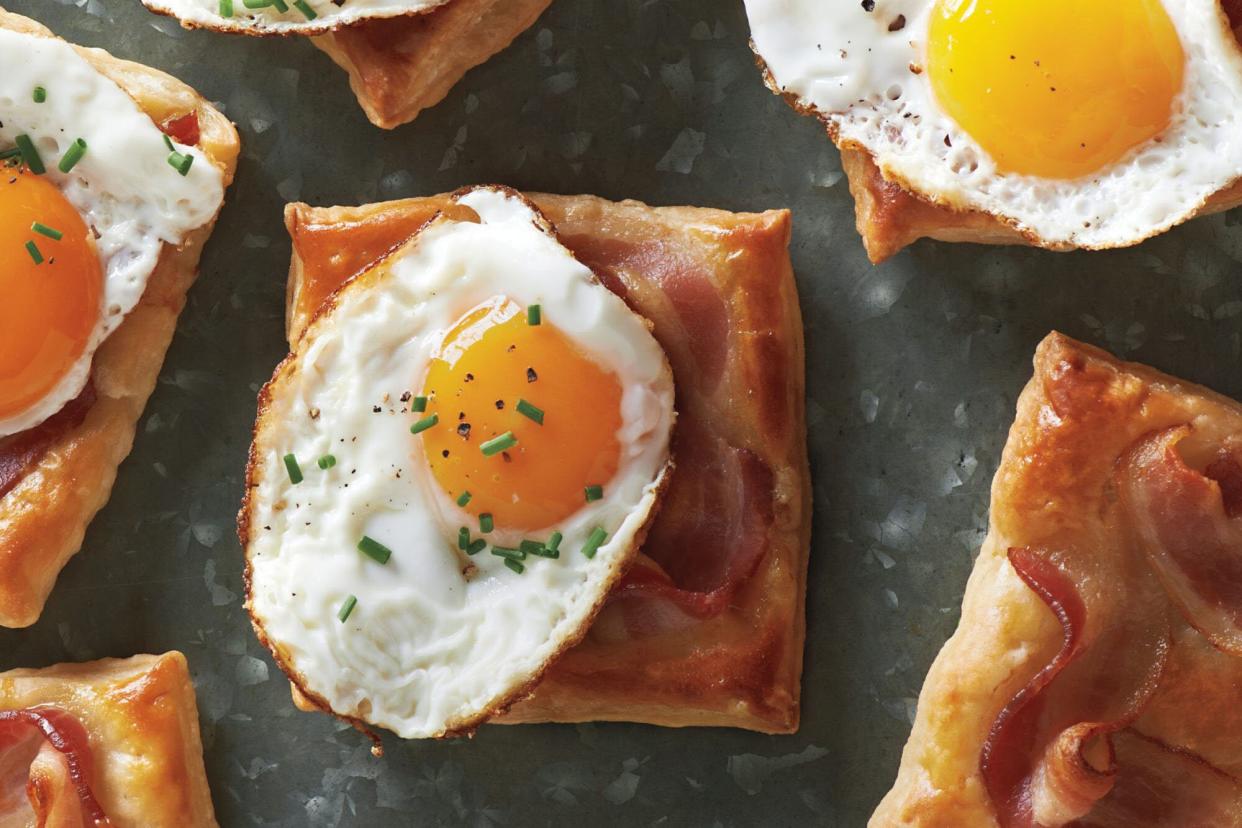How to fry eggs the right way, whether you like them sunny side up or over easy
How do you like your fried eggs? From sunny side up with bright, runny yolks to over hard with fully cooked centers that stay in place when you sink your fork in, there are so many ways to fry an egg—and even more opinions on the "right" way to do it.
Fried eggs are one of the quickest, easiest things you can cook—they're truly a kitchen fundamental—but you've likely discovered for yourself that "easy" doesn't always translate to "delicious." By understanding a little more about the techniques behind all of the various ways to fry an egg, you'll become an expert at making your very own version.

Related: 16 Recipes That Feature Fried Eggs for Breakfast, Lunch, or Dinner
The Language of Fried Eggs
How did sunny side up eggs get that cute, fanciful name? The ubiquitous term is generally attributed to "diner lingo"—the unique slang developed by short-order cooks in American diners and coffeehouses—and dates as far back as the 1880s. Other egg-related patter, like "over easy" and "over hard," has the same origins.
Tools You'll Need
Making perfect-for-you fried eggs comes down to having the right pan and spatula. The best skillets for the job are either nonstick or well-seasoned cast iron. Your spatula should be thin enough to slip under the delicate edge of the egg white and wide enough to support the whole egg. A thin stainless-steel spatula is ideal if you're cooking in cast iron. For nonstick pans, choose a good-quality silicone iteration that's flat, but flexible.
Frying Oils
We wouldn't dream of frying eggs without some fat in the pan. Butter is a timeless choice when it comes to flavor and function. As Martha explains, butter has emulsifiers that prevent eggs from sticking. You can also get great results—as well as flavor variations—with olive oil or bacon grease. And for the most neutral flavor, choose canola or grapeseed oil.
Heat Level
As a general rule, fried eggs are cooked over medium heat. The pan should just be hot enough that there's a little sizzle when the egg hits the skillet. If you're a fan of crispy fried edges, you may like to increase the heat to medium-high to achieve cratered, bubbly whites with crispy brown edges. There's also a school of thought that recommends "slow frying" eggs over very gentle heat. The resulting egg is pretty, but lacks the textural contrast between the edges of the white and the soft yolk that we prefer.
How to Make Sunny-Side-Up Eggs
Does your ideal breakfast begin with that golden moment of breaking into a soft yolk and watching its brilliant yellow trickle across your plate? Achieving this can be trickier than it looks—you need to cook the yolk just enough so it's warm, but still runny. The secret is to give the yolk a little assistance with either steam or hot fat.
Steam
To capture the power of steam and ambient heat and put the perfect finish on sunny-side-up yolks, you need a lid for your skillet. If you don't have a cover that fits the pan just right, grab a domed saucepan lid wide enough to enclose the eggs and set it directly on the surface of the skillet. Keep the lid in place for one to two minutes, depending on how much you want your yolks to set.
Hot Fat
For an extra little bit of breakfast decadence, you can bathe your egg in hot fat, instead. Once the whites are set, tilt the skillet and spoon up some of the sizzling butter, oil, or bacon grease and pour it directly onto the yolk. Repeat this process until the yolks are set to your liking.
How to Make Over-Easy Eggs
If sunny side up is a bit too runny for your taste, it's time to put your spatula skills to the test and give those eggs a gentle flip so you can cook your eggs over easy. This means the whites are fully cooked on both sides, but the yolk remains soft. Use your spatula to gently flip the eggs, one by one, and cook for just five to 10 seconds more.
Over-Medium or Over-Hard
The difference between yolks that are "over easy" and "cooked through" can be a matter of a few seconds more. If you like the yolk set, but not hard, that's over medium. Over hard means the yolk is well, hard—similar to the yolk of a hard-boiled egg. To find your sweet spot, try varying times between 15 seconds and one minute when you cook the flip side of your eggs.






